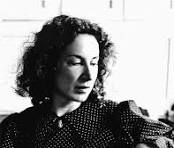The Handmaid’s Tale by Margaret Atwood – Summary
Let’s dive into the brief introduction of the author before understanding The Handmaid’s Tale by Margaret Atwood – Summary.
A brief introduction to the Author: Margaret Atwood

Margaret Atwood is a renowned Canadian author, poet, literary critic, and environmental activist, born on November 18, 1939, in Ottawa, Ontario, Canada. She is best known for her works of speculative fiction, which blend sharp political commentary with profound insights into human nature, particularly regarding gender, power, and identity.
Atwood has written more than 50 books, including novels, short stories, poetry, and essays. Her most famous novel, The Handmaid’s Tale (1985), is a dystopian vision of a theocratic regime where women are stripped of all rights. The book has received critical acclaim and has been adapted into a successful TV series, drawing renewed interest in her work.
Some of her other notable books include:
-
Alias Grace (1996) – based on a real 19th-century murder case
-
Oryx and Crake (2003) – a futuristic bioengineering dystopia
-
The Testaments (2019) – a sequel to The Handmaid’s Tale that won the Booker Prize
Atwood’s writing is known for its intellectual depth, poetic language, and feminist themes. She remains a powerful voice in literature and global discussions on climate change, women’s rights, and freedom of expression.
Summary of The Handmaid’s Tale by Margaret Atwood
The Handmaid’s Tale is a dystopian novel set shortly in the theocratic and totalitarian Republic of Gilead, which has replaced the United States. Faced with a severe drop in birth rates due to pollution and sexually transmitted diseases, Gilead enforces a rigid caste system based on gender roles and fertility.
The story is narrated by Offred, a Handmaid whose only purpose is to bear children for elite, barren couples. Her name means “Of-Fred” (belonging to Fred, her Commander). Offred remembers the time before Gilead, when she had a family, a job, and freedom. Now, stripped of her identity and forced into sexual servitude, she secretly rebels in small ways and yearns for escape.
Throughout the novel, Offred navigates a web of power, fear, and resistance. She begins an illicit affair with the Commander, befriends his wife Serena Joy, and forms a bond with Nick, a Guardian who may be part of the underground resistance called “Mayday.”
The novel ends ambiguously, with Offred being taken away by either the government or the resistance. A future academic epilogue suggests that Gilead eventually fell, and Offred’s account became a historical artifact.
Chapter-Wise Summary of The Handmaid’s Tale by Margaret Atwood
The book is divided into sections rather than traditional chapters, often alternating between Offred’s present in Gilead and her memories of the past.
Sections 1–5: Life at the Red Center and Introduction to Gilead
-
Offred recalls her time at the Red Center, where women are indoctrinated to become Handmaids.
-
We learn about Aunt Lydia and the strict biblical teachings.
-
In the present, Offred is assigned to the Commander’s household. She describes the rigid hierarchy of Gilead.
Sections 6–12: Daily Life and Flashbacks
-
Offred walks daily with another Handmaid, Ofglen. They’re constantly watched.
-
Flashbacks reveal Offred’s daughter being taken from her.
-
She recalls her life before Gilead—her husband Luke and her lost freedom.
Sections 13–23: Ceremony and Forbidden Encounters
-
The “Ceremony” is described, where the Commander attempts to impregnate Offred while she lies between Serena Joy’s legs.
-
The Commander invites Offred to his study for secret meetings, playing Scrabble, and reading magazines.
-
Offred is confused by his motives but complies to gain protection.
Sections 24–30: Offred’s Inner Rebellion
-
Offred starts developing a relationship with Nick, the chauffeur.
-
Ofglen hints at being part of the resistance.
-
Offred contemplates suicide and begins to reclaim her own identity internally.
Sections 31–37: Serena Joy’s Proposition
-
Serena Joy offers to help Offred get pregnant through Nick.
-
Offred visits Jezebel’s, a secret club where Commanders take women for pleasure.
-
She sees Moira, her old friend, now working there.
Sections 38–46: Mayday and Final Capture
-
Ofglen commits suicide to avoid capture.
-
Offred is caught, but it’s unclear if the “Eyes” who come for her are government agents or resistance.
-
She enters a van, her fate unknown.
🔹 Historical Notes Epilogue
-
A future academic conference analyzes Offred’s story.
-
Gilead has collapsed. Her story is found on cassette tapes.
-
Scholars debate the accuracy and identity of characters.
Character Analysis of The Handmaid’s Tale by Margaret Atwood
🔸 Offred
-
Protagonist and narrator.
-
Reflective, quietly rebellious, clings to memories of her past life.
-
Represents the struggle to retain one’s identity under oppression.
🔸 The Commander
-
A high-ranking Gileadean official.
-
Secretly breaks laws, showing hypocrisy in the system.
-
Ambiguous in motives—both controlling and somewhat indulgent.
🔸 Serena Joy
-
The Commander’s wife, who was once a public figure promoting domesticity.
-
Bitter and powerless, yet complicit in the system.
-
Uses Offred to achieve her ends (a child).
🔸 Nick
-
The household chauffeur.
-
Possibly part of the resistance.
-
His relationship with Offred is complex, comforting yet uncertain.
🔸 Moira
-
Offred’s college friend and feminist rebel.
-
Represents resistance and independence.
-
Her eventual resignation at Jezebel’s signifies the crushing power of Gilead.
🔸 Aunt Lydia
-
In charge of Handmaid indoctrination.
-
Embodies Gilead’s propaganda.
-
Repeats phrases like “Blessed be the fruit,” blending religion and control.
Major Themes :
1. Female Oppression and Control of Reproduction
-
Women are valued only for fertility.
-
Gilead reduces women to categories: Wives, Handmaids, Marthas, Econowives.
2. Power and Hypocrisy
-
The elite create strict rules but secretly break them.
-
The Commander’s outings to Jezebel’s reveal double standards.
3. Identity and Resistance
-
Offred clings to memories, her real name, and language as resistance.
-
Small acts (reading, thinking freely) are subversive.
4. Surveillance and Fear
-
Gilead uses spies (“Eyes”) and indoctrination.
-
Fear keeps people obedient, even when they disagree.
5. Religion as a Tool of Control
-
Biblical passages are twisted to justify control over women.
-
Religious language masks cruelty and control.
The Importance of Colour Coding:
In The Handmaid’s Tale, color-coded clothing is used to visually signify a person’s role and status in the society of Gilead. Specifically:
🔴 Handmaids – Red

-
The Handmaids wear bright red dresses with white wings (bonnets) covering the sides of their faces.
-
Symbolism:
-
Red represents fertility, menstruation, and sexuality, as Handmaids are tasked with bearing children.
-
It also connotes danger and blood, reflecting their vulnerable, objectified status.
-
The white wings restrict their vision, symbolizing the oppression and control they experience.
-
Other key colors in Gilead:
-
🔵 Wives – Blue (symbolizes purity and high status)
-
⚪ Daughters – White (innocence and virginity)
-
🟤 Marthas – Green or dull brown/grey (domestic workers, signifying service and invisibility)
-
⚫ Aunts – Brown (authority figures who train Handmaids)
-
🟡 Econowives – Stripes of red, blue, and green (lower-class women who perform all roles)
📼 Historical Notes and the Age of the Tapes
The novel ends on an ambiguous note.
After Offred’s secret relationships, her involvement with the Commander, and the apparent betrayal or setup by Serena Joy, she is taken away by men who claim to be “the Eyes” (Gilead’s secret police). However, Nick tells her to trust him—suggesting that the men may be part of the underground resistance group, Mayday.
Offred steps into the van, not knowing if she is being rescued or arrested. Her final words reflect uncertainty:
“And so I step up, into the darkness within; or else the light.”
The novel concludes with a “Historical Notes” section, which is set in the year 2195, more than 150 years after Offred’s story takes place.
-
This section is presented as a transcript from an academic conference called “The Twelfth Symposium on Gileadean Studies.”
-
Offred’s story was found on cassette tapes, which were later transcribed and titled The Handmaid’s Tale.
-
The scholars speculate about Offred’s identity, the real names of characters like the Commander, and the historical accuracy of the tapes.
-
It is revealed that Gilead has collapsed, and Offred’s account has become an important but incomplete historical record.
